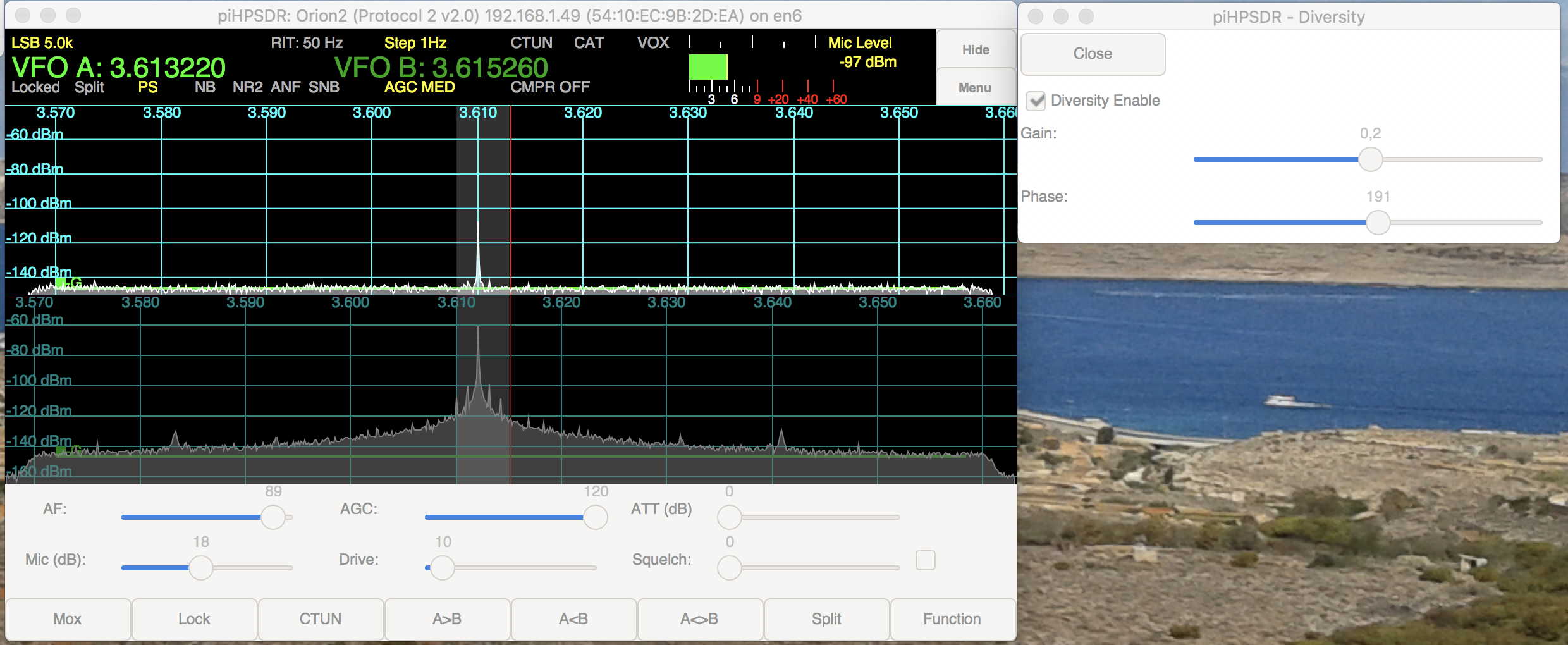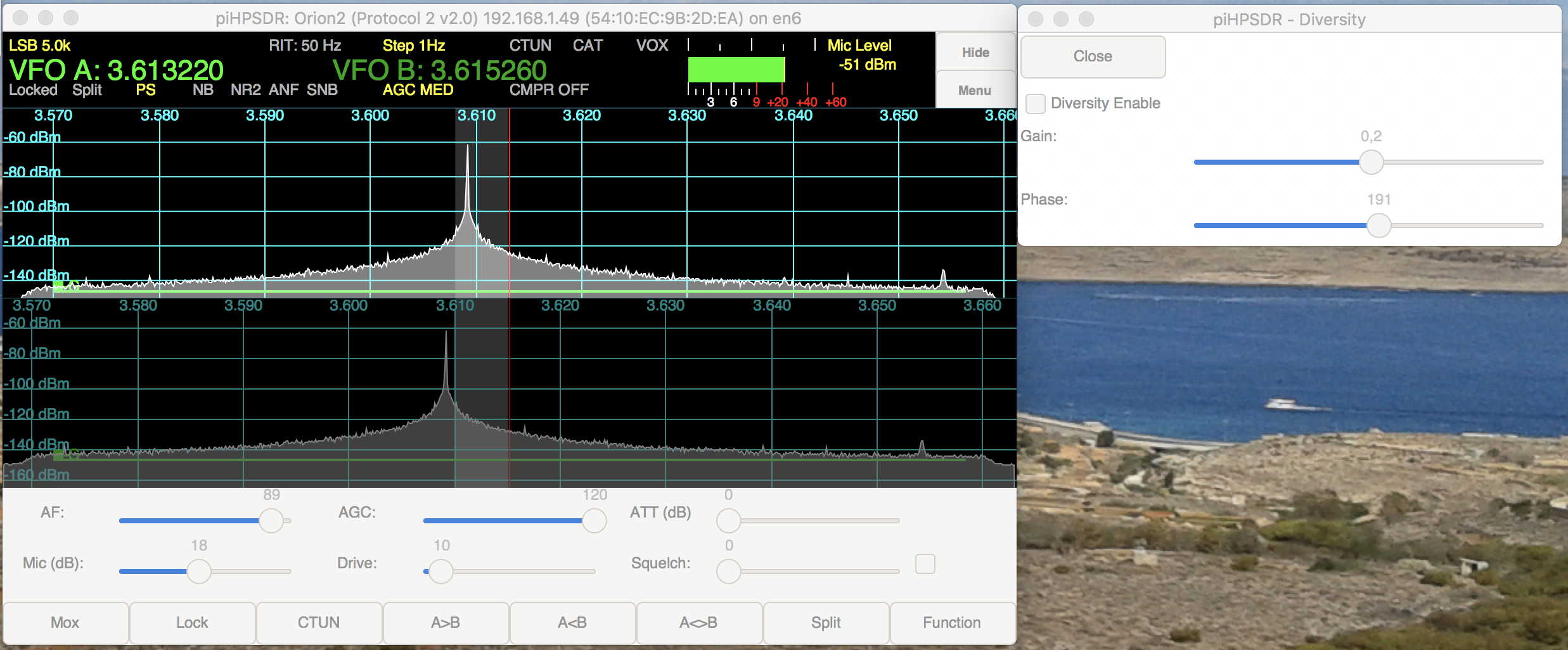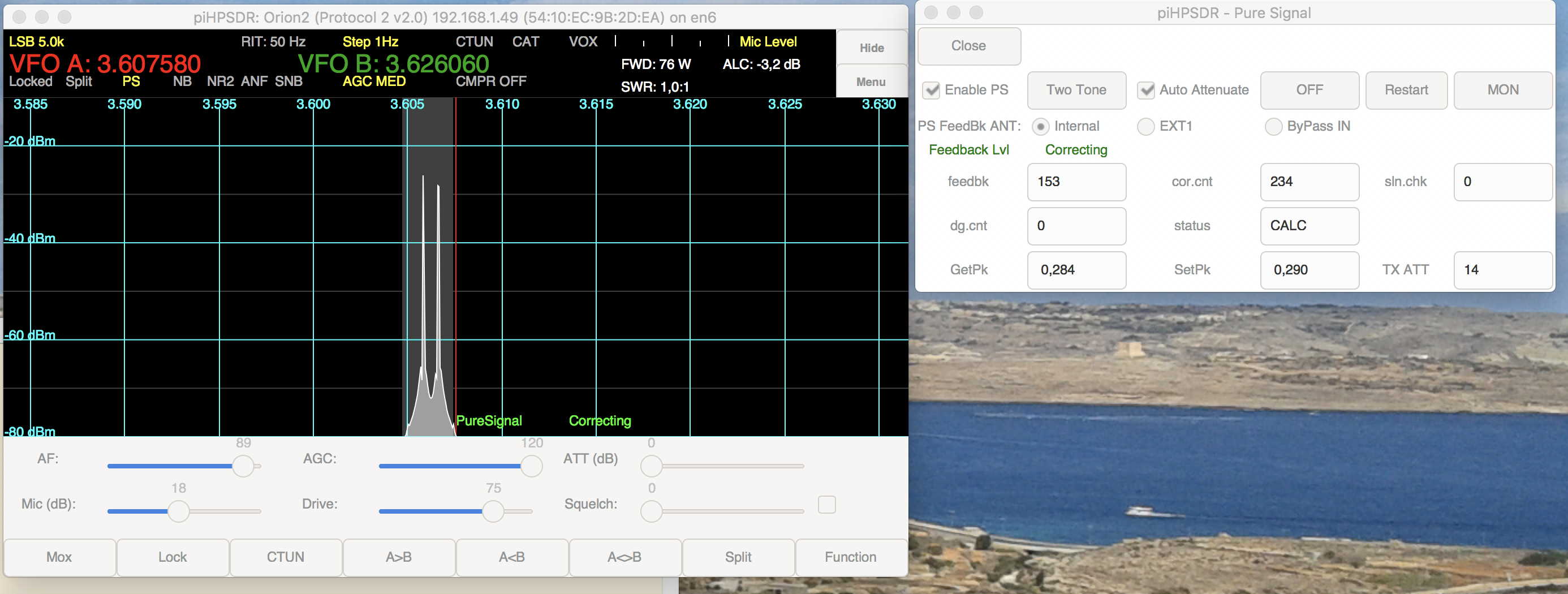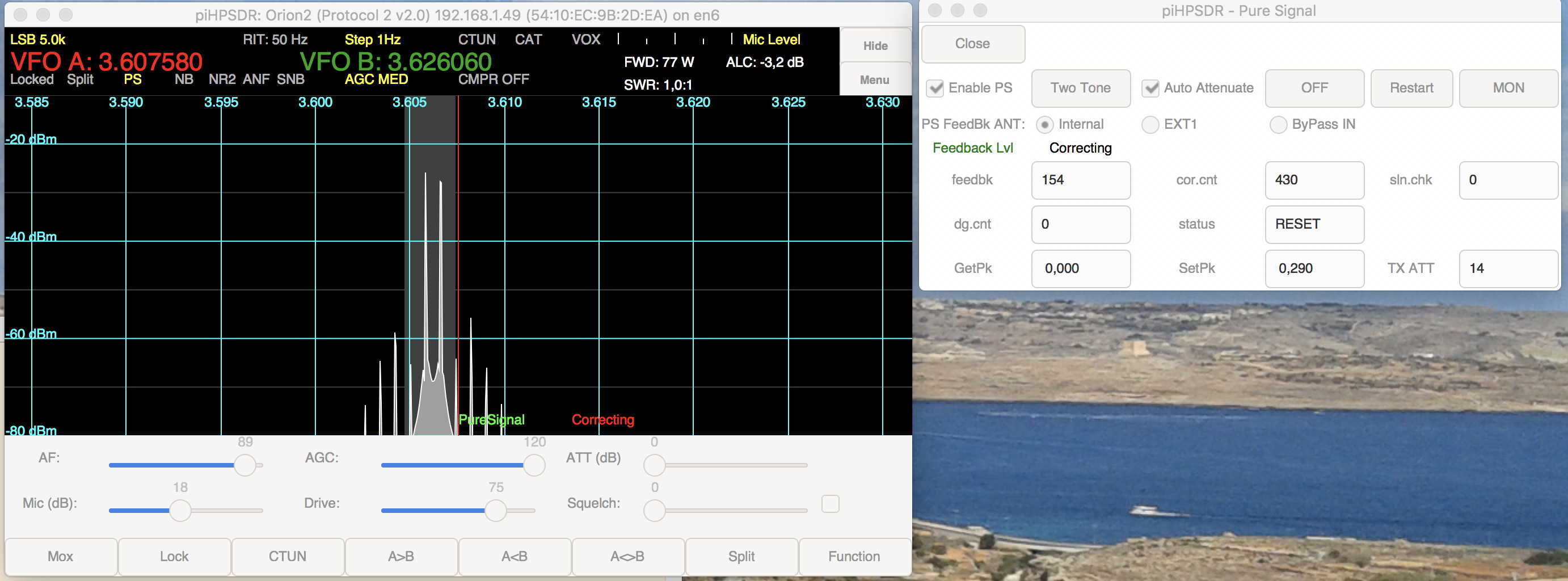piHPSDR running on MacOS
with DIVERSITY and PURESIGNAL
Part 2: Using an ANAN-7000 SDR with the "new protocol"
For
explanations on what PURESIGNAL and DIVERSITY is all about, see the
page on testing these things on a HAMlab. The test-bed is the same for
both cases, except that I can get about 100 watts out of the ANAN-7000
"bare foot" and drive the PA with about 30 W.
NOTE: The P2 (P2
means "protocol version 2", a.k.a. "new protocol") firmware for the
ANAN-7000 had severe timing problems. In the tests described here, I
used a pre-release of the 2.0 P2 firmware (file name:
Orion_MkII_Protocol_2_v2.0_pre1.rbf) which is not yet officially
released but which you can find on the internet.
TESTING DIVERSITY
To test diversity, I took a signal from a signal generator and fed it
by two cables of different length to the main antenna jacket and to the
RX2 input of the Anan. Then I adjusted the gain and phase of the
DIVERSITY mixer such that the signal in the main receiver (top panel)
went down as much as possible. On the lower panel you see the RX2
signal. The following two pictures show screen shots with DIVERSITY
active (first picture) and after DIVERSITY has been deactivated (second
picture). The signal strength in the passband is only -97 dBm if the
QRM is suppressed but raises to -57 dBm if no DIVERSITY is active.


TESTING PURESIGNAL part 1: ANAN-7000 bare-foot
Then I tested PURESIGNAL in a two-tone experiment. I present
screen-shots here (piHPSDR can display the feedback signal that comes
from the antenna). The ANAN is set to 75 Watts, and the "internal"
feedback path has been used (see the PS menu).
The first picture shows the feedback signal with
PURESIGNAL active, while the second picture shows it after PURESIGNAL
has been switched off by hitting the "OFF" button. With PURESIGNAL, the
IM3 satellites are about 50 dB below the signal peaks.
After switching off PURESIGNAL (hitting the "OFF" button),
I get slightly less than 30 dBc which is still an acceptable value.
Note that by hitting the "Restart" button PURESIGNAL becomes active again.


TESTING PURESIGNAL part 2: ANAN-7000 and FL2100 tube amplifier
Now I come to the limits of what my dummy load can stand for extended periods, so
I drive the FL2100 with 30 watts (PEP) only, this gives 200 watts (PEP) out of my
FL2100. Now we have to use "external feedback", that is,
we have to connect the attenuator at the dummy load with the "RX ByPass" jacket of the ANAN-7000.
Of course, the now different feedback path must be selected in the PS menu (see following pictures).
Again I present screen shots with and
without PURESIGNAL. With PURESIGNAL active, the IM3 satellites are again at least
50 dB below the signals, and with PURESIGNAL switches off I see slightly more
than 30 dBc. Interestingly, this is better than the result from the ANAN "barefoot",
probably because the ANAN behaves much better if the drive is small and the FL2100
is also driven very low. The attenuation that was automatically adjusted by piHPSDR
is now lower than in the "bare foot" case because the attenuator which I have built
into my DummyLoad is stronger than the coupler inside the ANAN-7000.


NOTE on the required attenuation
This is not a critical issue here. I use a 60 dB attenuator
(see my page on how I added this to my DummyLoad/WattMeter).
A smaller attenuation is possible, since there is a built-in
software-conrolled step attenuator (0-31 dB) on the Orion-II board
that is set by piHPSDR such that the feedback signal level is
optimal for PS.
DL1YCF, July 2019





